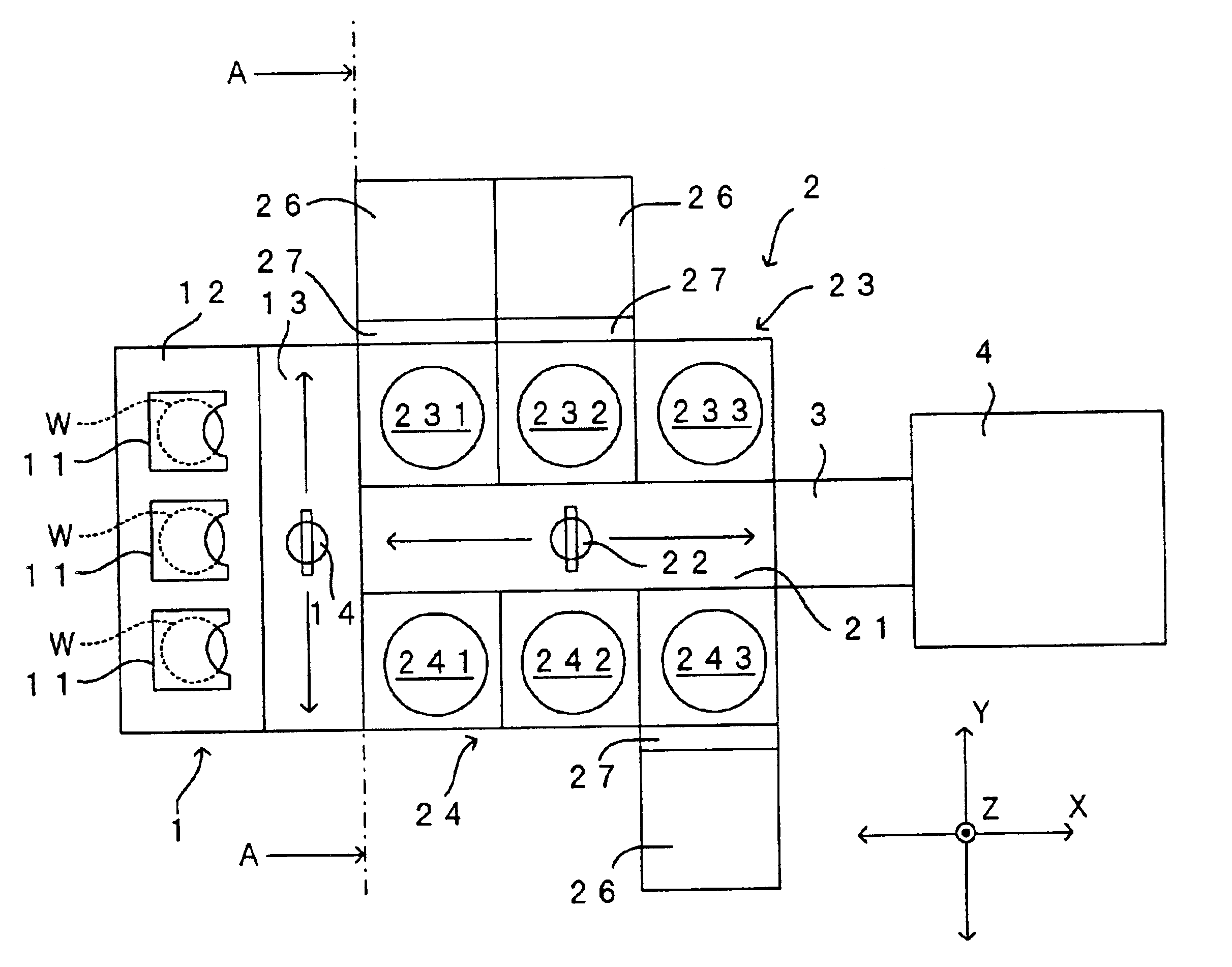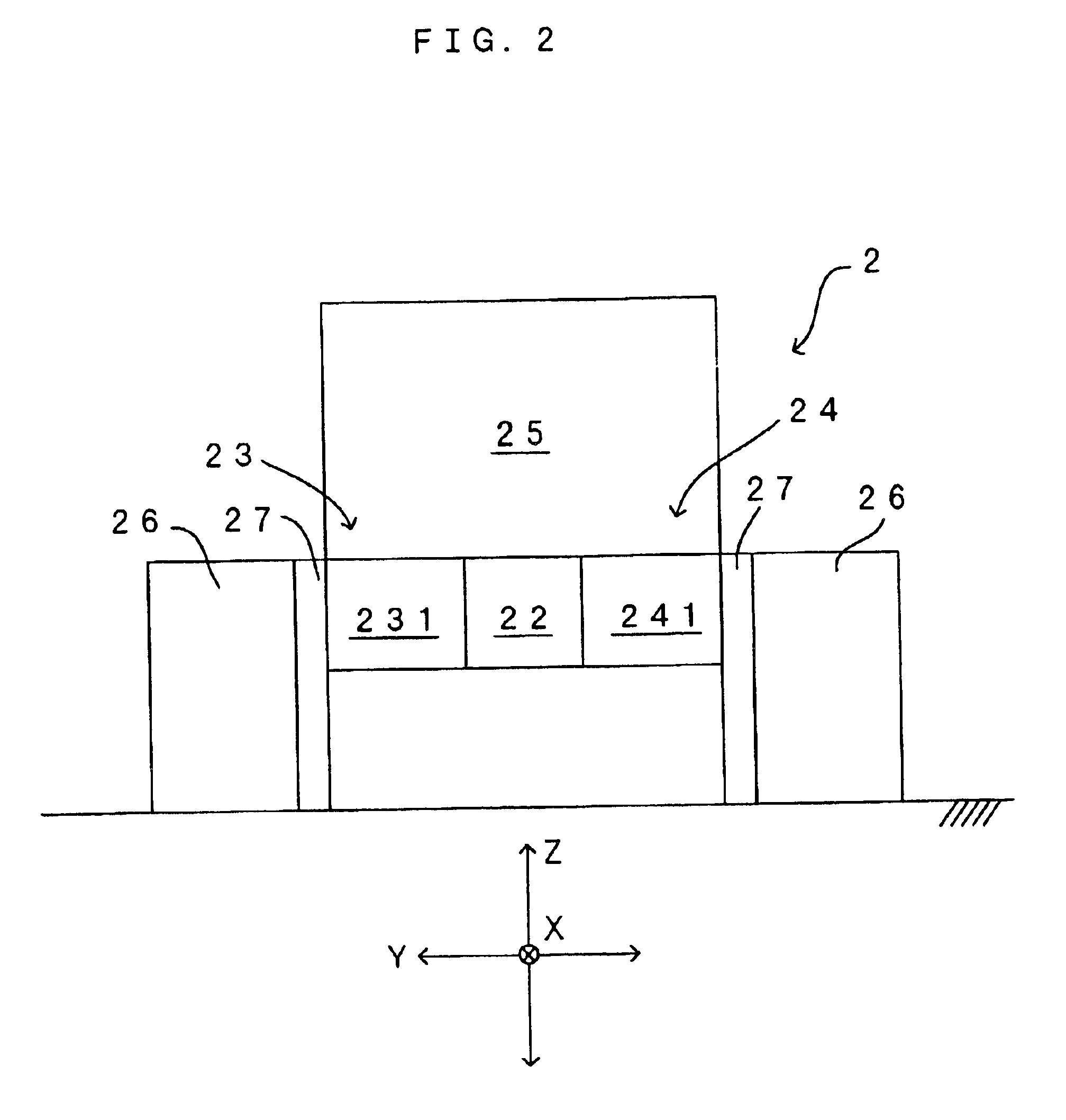Substrate processing apparatus equipping with high-pressure processing unit
a processing apparatus and high-pressure technology, applied in lighting and heating apparatus, charge manipulation, furnaces, etc., can solve the problems of destroying fine patterns, reducing the size of semiconductor devices, and new problems in the processing of substrates
- Summary
- Abstract
- Description
- Claims
- Application Information
AI Technical Summary
Benefits of technology
Problems solved by technology
Method used
Image
Examples
Embodiment Construction
FIG. 1 is a drawing which shows a preferred embodiment of a substrate processing apparatus according to the present invention. FIG. 2 is a drawing along the A—A line in FIG. 1. Disposed in this substrate processing apparatus are an indexer 1, a processing module 2 which is disposed adjacent to and on one side to the indexer 1, an interface 3 which is disposed adjacent to and on one side to the processing module 2, and an exposing unit 4 which is disposed adjacent to and on one side to the interface 3. Of these elements, the indexer 1 is exactly the same in structure to that of the conventional apparatus shown in FIG. 9, and therefore, the same structures will be denoted at the same reference symbols but will not be described again.
As in the conventional apparatus shown in FIG. 9, the processing module 2 comprises a main transportation robot 22 which can move on a main transportation path 21 which extends long along a direction X perpendicular to the direction Y, and unit columns 23,...
PUM
| Property | Measurement | Unit |
|---|---|---|
| Pressure | aaaaa | aaaaa |
Abstract
Description
Claims
Application Information
 Login to View More
Login to View More - R&D
- Intellectual Property
- Life Sciences
- Materials
- Tech Scout
- Unparalleled Data Quality
- Higher Quality Content
- 60% Fewer Hallucinations
Browse by: Latest US Patents, China's latest patents, Technical Efficacy Thesaurus, Application Domain, Technology Topic, Popular Technical Reports.
© 2025 PatSnap. All rights reserved.Legal|Privacy policy|Modern Slavery Act Transparency Statement|Sitemap|About US| Contact US: help@patsnap.com



